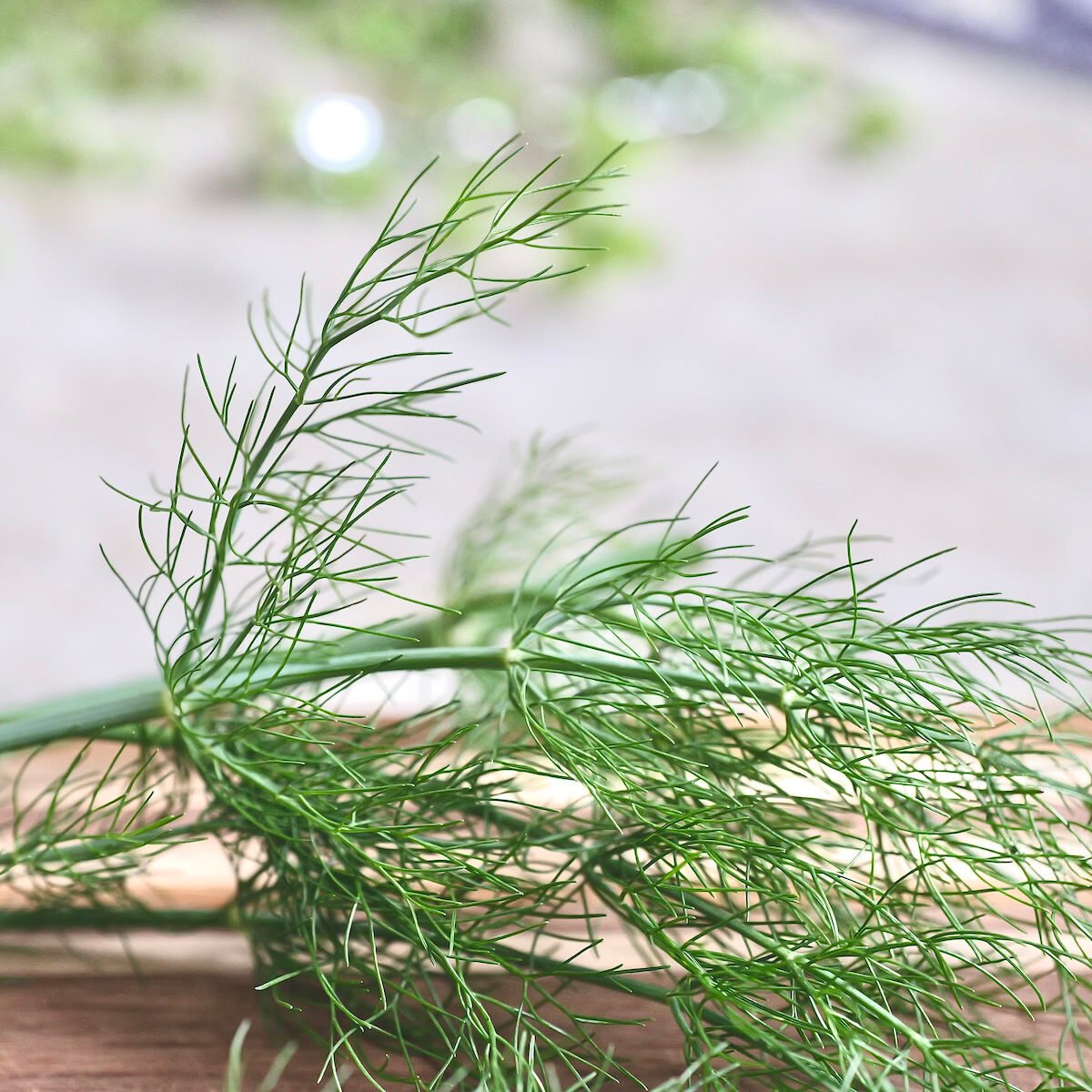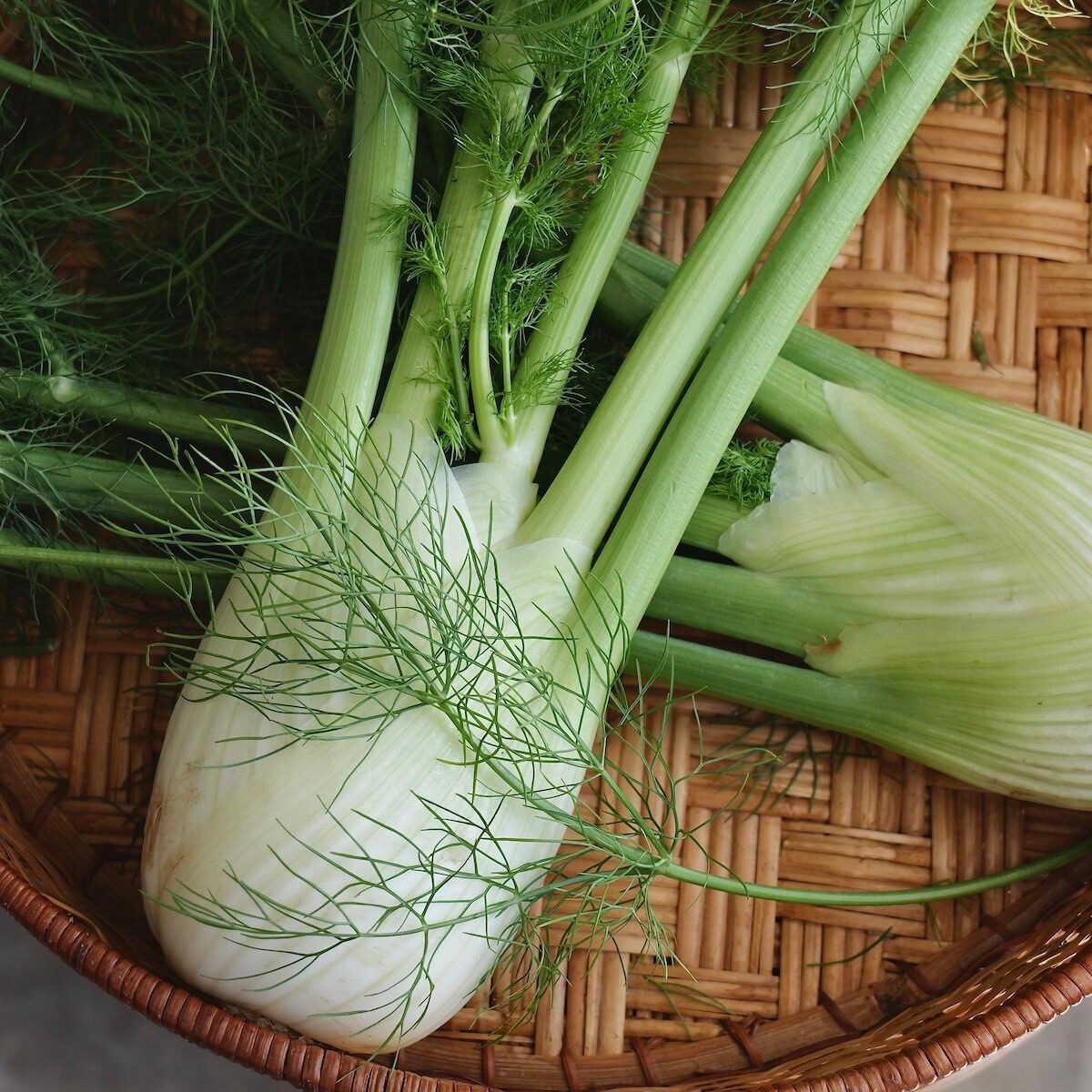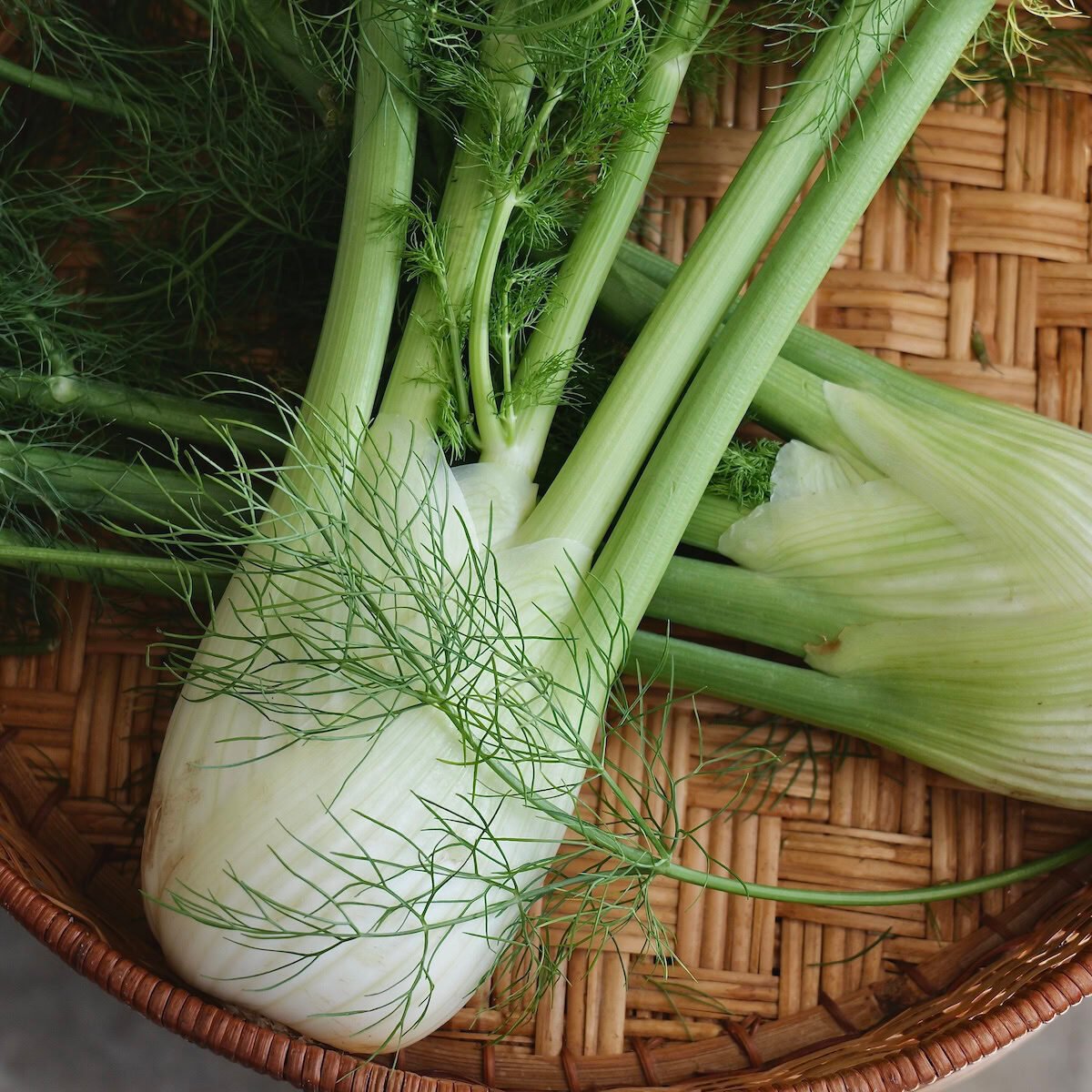Fennel
Fennel is the herb derived from the leaves and shoots of Foeniculum vulgare, a perennial in the parsley family. The fennel plant also provides two spices from its fruit and pollen, and a seasoning vegetable from its bulb.

REGION OF ORIGIN
Fennel was born on the shores of the Mediterranean, spanning Southern Europe, North Africa, and the Middle East. This region's mild winters and dry summers allowed fennel's wild ancestors to flourish. From ancient Egypt to Greece and Rome, the herb has been celebrated for millennia.
PART & COLOR
Fennel is a versatile herb, offering four culinary gems: an herb from its delicate leaves and shoots (often called fronds), a spice from its tiny fruits, a spice from its pollen, and a seasoning vegetable from its white, pale green bulb (below).
HARVEST
Fennel is a fast-growing perennial herb that can produce for several years. It is sown in the spring and fronds can be harvested at any time during the growing season. The bulb is usually harvested when it reaches the size of a tennis ball, about 3-4 months after planting. Fennel fruits are harvested from the flower heads once they turn a greenish-brown color in the late summer to early autumn. Fennel pollen, collected from the flowers, is best harvested in the late summer when the flowers are in full bloom, right before they start to seed.

FLAVOR & AROMA PROFILE
Fennel’s distinctive aroma combines the sweetness of anise with earthy and herbaceous notes. The fresh fronds emit a refreshing, bright fragrance reminiscent of licorice candy and freshly baked bread, but with soft undertones of citrus and pine. The flavor of fresh fennel fronds (try saying that 5 times fast) is captivating, featuring a sweet and mildly peppery taste and a gentle, warm bitterness.
Fennel seed offers a more concentrated experience with a prominent pungency and lingering anise finish. The bulb provides a milder, sweeter flavor with a delightful crunch. This sweetness is greatly amplified through cooking, making for a delicious seasoning when chopped and sprinkled on a dish as you would with onion. The most potent aroma and flavor is found in the pollen, though, allowing you to fully experience the essence of fennel.
CULINARY USES
With so many of its parts used and its unique combination of sweet, earthy, herbal, and bitter notes, fennel is an herb of many faces that can adapt to a vast variety of culinary opportunities. Its fronds, bulb, fruits, and pollen all offer a distinct texture and a unique lens through which to experience the flavors of the plant.
The feathery fronds are used fresh or dried as an herb, adding intriguing bright notes to stocks, soups, stews, and fish dishes. The fresh bulb is often thinly sliced and added to salads for a crisp, anise bite. It can also be roasted, grilled, or sautéed, which brings out its natural sweet caramel notes. Fennel seed is a multicultural sensation, a favorite in Italian sausages, Middle Eastern spice blends, and Indian curries. The pollen is prized for its rarity as well as its prowess, adding a burst of flavor to desserts, pastries, grilled fish, and roasted vegetables.



